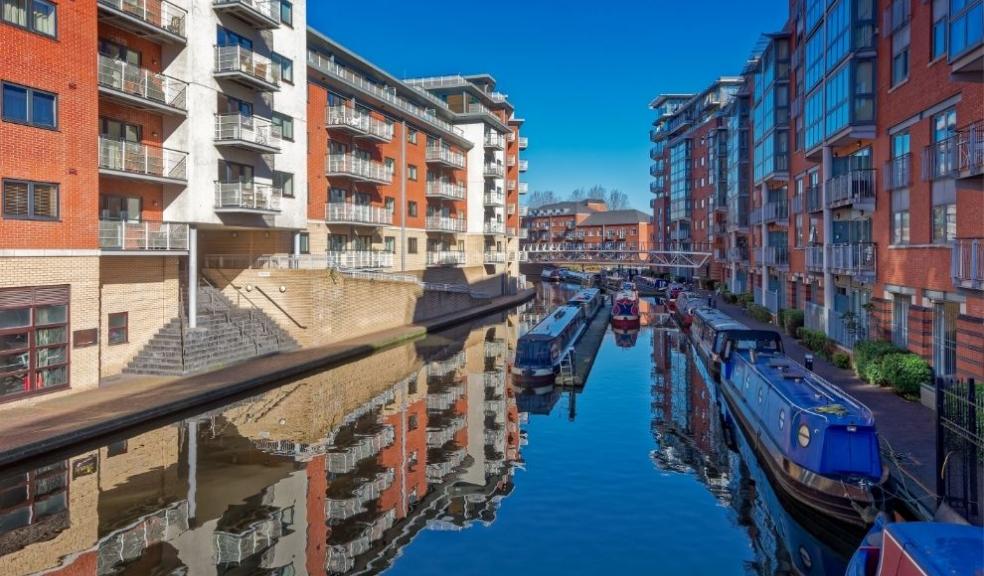
Birmingham leads rental market revival as tenant demand jumps 10% in Q1
Research by estate and lettings agent, Barrows and Forrester, has revealed that the rental market across the UK’s major cities has started to pick up as we edge out of lockdown.
The latest market data from Barrows and Forrester shows that there has been a sharp uplift in tenant demand for rental properties across the UK’s major cities. Demand for rental homes now sits at 37.6% for the first quarter of the year, having climbed +10.4% since the final quarter of last year.
Biggest increases in rental demand during Q1
Of all major cities analysed by Barrows and Forrester, it’s their hometown of Birmingham that has seen the biggest increase in rental demand in 2021. The UK’s second city has seen a +25.2% uplift in demand for rental homes, with 46.7% of all properties on the market being snapped up by tenants.
Bournemouth has also seen a considerable increase, up +23.3% between Q1 of this year and the final quarter of 2020.
Cardiff (+18.6%), Southampton (+16.8%) and Newport (+16.4%) also rank within the top five largest increases in rental demand.
Just Liverpool and Belfast have seen rental demand drop during the first quarter of this year, down -2.3% and -15.8% respectively
Hottest rental markets
In terms of the cities with the highest levels of current rental demand, Bournemouth sits top with 74.6% of all rental homes already let.
Rental homes in Newport are also in high demand at 74.2%, with Bristol (59.7%), Nottingham (52%) and London (48.3%) also scoring high.
London
Within the capital, Enfield (+25.6%), Waltham Forest (+20.9%), Haringey and Sutton (+20.3%) have seen the largest increase in rental demand of all boroughs, while Sutton (76%), Enfield (72.9%) and Bromley (70.9%) are home to the highest levels of current demand.
Managing Director of Barrows and Forrester, James Forrester, commented:
“It’s been a very tough year for landlords and many have seen their rental income reduce due to tenants falling on tough financial times, while others have struggled to find a tenant in the first place.
As a result, early signs of rental demand returning to the market will be very welcome indeed and, as we ease out of lockdown, this is a trend we will hopefully see increase throughout the remainder of the year.
The green light for some university students to return and the fast-approaching start of a new academic year should further boost this initial increase in demand and so things are certainly starting to look up for the UK rental sector.”
The Rental Market Demand Review by Barrows and Forrester is a quarterly look at tenant demand levels in each major UK city. The index is based on the number of properties that are already marked as let agreed as a percentage of all homes listed across the major property portals. For example, if 100 homes are listed and 50 are already taken by prospective tenants, the area would sit at a 50% demand score.
|
Major UK Cities |
2020 |
2021 |
Q4 2020 to Q1 2021 |
|
Q4 |
Q1 |
Change |
|
|
Birmingham |
21.5% |
46.7% |
25.2% |
|
Bournemouth |
51.3% |
74.6% |
23.3% |
|
Cardiff |
24.2% |
42.8% |
18.6% |
|
Southampton |
30.2% |
47.0% |
16.8% |
|
Newport |
57.8% |
74.2% |
16.4% |
|
Bristol |
43.7% |
59.7% |
16.1% |
|
Newcastle |
23.4% |
38.7% |
15.2% |
|
Portsmouth |
33.0% |
47.9% |
14.9% |
|
London |
33.80% |
48.3% |
14.5% |
|
Manchester |
23.2% |
36.9% |
13.6% |
|
Nottingham |
38.7% |
52.0% |
13.4% |
|
Sheffield |
21.8% |
34.5% |
12.7% |
|
Oxford |
27.3% |
38.1% |
10.8% |
|
Leicester |
20.2% |
29.7% |
9.5% |
|
Cambridge |
21.7% |
30.9% |
9.1% |
|
Plymouth |
34.4% |
42.3% |
7.8% |
|
Leeds |
12.8% |
18.6% |
5.8% |
|
Glasgow |
35.1% |
39.4% |
4.3% |
|
Edinburgh |
6.6% |
9.7% |
3.1% |
|
Aberdeen |
4.4% |
7.5% |
3.1% |
|
Swansea |
9.7% |
12.4% |
2.7% |
|
Liverpool |
23.0% |
20.6% |
-2.3% |
|
Belfast |
27.8% |
12.0% |
-15.8% |
|
Average |
27.20% |
37.6% |
10.4% |
|
|
|
|
|
|
London Boroughs |
2020 |
2021 |
Q4 2020 to Q1 2021 |
|
Q4 |
Q1 |
Change |
|
|
Sutton |
55.7% |
76.0% |
20.3% |
|
Enfield |
47.3% |
72.9% |
25.6% |
|
Bromley |
54.9% |
70.9% |
15.9% |
|
Havering |
54.7% |
68.6% |
13.9% |
|
Bexley |
65.6% |
67.0% |
1.4% |
|
Croydon |
44.6% |
60.6% |
16.0% |
|
Waltham Forest |
38.6% |
59.5% |
20.9% |
|
Hillingdon |
37.4% |
55.3% |
17.9% |
|
Haringey |
34.1% |
54.4% |
20.3% |
|
Merton |
36.1% |
54.2% |
18.1% |
|
Barking and Dagenham |
43.6% |
54.1% |
10.5% |
|
Richmond upon Thames |
39.1% |
53.5% |
14.4% |
|
Kingston upon Thames |
42.7% |
51.9% |
9.2% |
|
Wandsworth |
33.0% |
51.7% |
18.8% |
|
Lewisham |
35.3% |
50.8% |
15.5% |
|
Harrow |
33.7% |
49.6% |
15.8% |
|
Redbridge |
31.7% |
48.5% |
16.8% |
|
Lambeth |
30.6% |
47.9% |
17.3% |
|
Barnet |
26.4% |
46.6% |
20.2% |
|
Newham |
29.6% |
45.3% |
15.7% |
|
Islington |
27.7% |
44.7% |
17.0% |
|
Hackney |
26.8% |
44.1% |
17.3% |
|
Southwark |
26.9% |
43.8% |
16.9% |
|
Greenwich |
33.8% |
43.1% |
9.3% |
|
Hounslow |
31.7% |
42.3% |
10.6% |
|
Ealing |
22.5% |
37.5% |
15.0% |
|
Tower Hamlets |
22.8% |
37.0% |
14.1% |
|
Hammersmith and Fulham |
26.5% |
34.4% |
8.0% |
|
City of London |
23.2% |
34.0% |
10.8% |
|
Brent |
18.0% |
32.2% |
14.2% |
|
Camden |
18.9% |
31.5% |
12.6% |
|
Kensington and Chelsea |
12.0% |
16.1% |
4.1% |
|
Westminster |
10.8% |
15.4% |
4.6% |
|
London |
33.80% |
48.30% |
14.5% |









